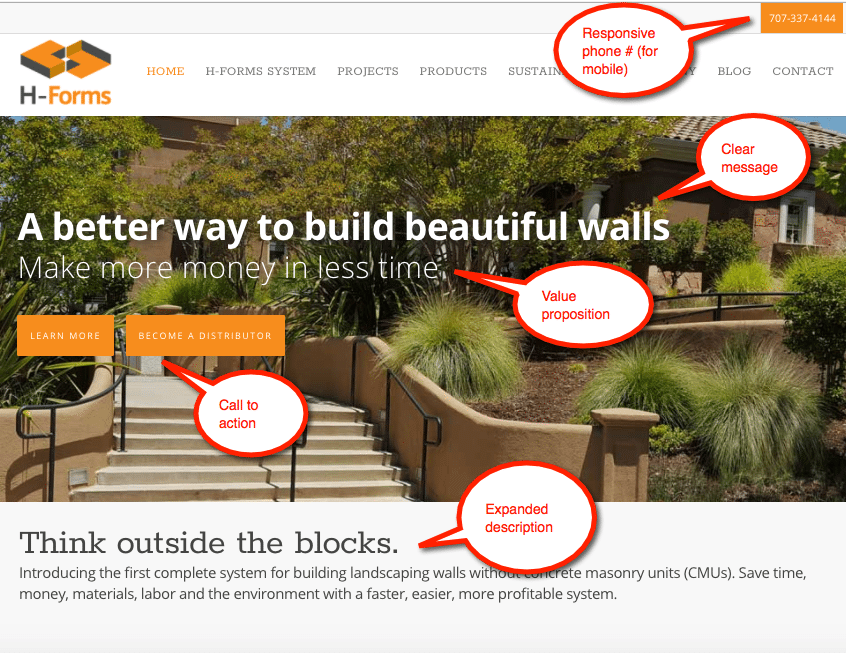This blog post is part of “The Ultimate Guide to Web Development” blog series.
There are some things that are optional on home pages, but most businesses require some basic functionality in order for the site to be useful to users. We’ll show you a before and after example to highlight the differences between a well-thought-out home page and one that simply conveys a bunch of undifferentiated information.
Before
This is the website of a client that came to us with a terrific product–a lightweight, extremely strong, easy to install landscaping wall. As you can see, the site was cluttered, dense with text without a clear message, not much logic to the information architecture, and without what have come to be “must-have” structure and functionality:
- A clear message.
- A simple, compelling value proposition.
- An expanded product description.
- Clear calls to action for different audiences.
- A mobile-responsive design and tap-to-dial phone number.
- Social sharing buttons.
Heck, you couldn’t even find the name of the company!
You can see that the company started with none of these elements. You could say there is a call to action in a “contact us” link that stands out in a different color than the surrounding text, but it was meant to let people know how to find out about information from incomplete pages on the site.


After
Now let’s look at the “after” version of the website. All six items are there, and the site has been a much more valuable source of business for the company. It is easy to understand the product offered, the value it delivers, and who it is for–landscape product distributors. The phone number is on every page, and can be dialed with a tap on a mobile device, and the social sharing buttons are in the footer.


Your home page is your first impression, and as we all know, you never get a second chance to make a first impression. There is no universal blueprint for what makes a website good, but there are some elements that are pretty much non-negotiable for businesses that rely on their websites for branding and for lead generation.
This project was done on a modest budget and fast time frame. The purpose of showcasing this site is not to criticize the client’s previous page, or to claim that this is the ultimate in website design. Rather, this is meant to show a kind of minimal viable product for a home page–basics that are more or less required for a site to be successful. Of course, there are other elements off-page that are also critical for SEO.
What do you think? Feel free to add to the list!
This blog post is part of “The Ultimate Guide to Web Development” blog series.




